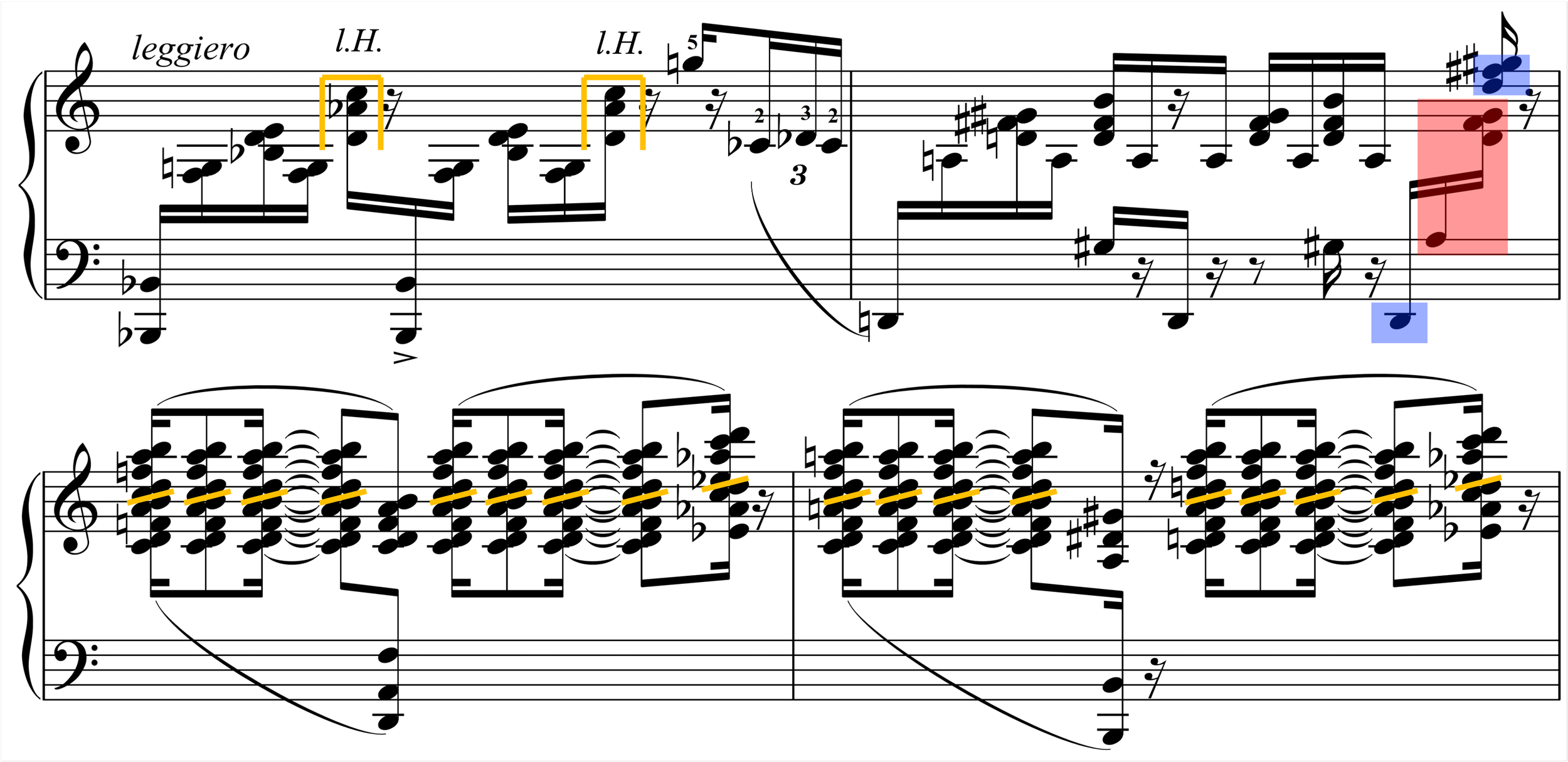“Taking the alto notes with the left hand assimilates the first half of the measure with the second which I find both mentally and physically simpler.”
Submitted by Michael Clark
Published 1/1/2020

“Taking the alto notes with the left hand assimilates the first half of the measure with the second which I find both mentally and physically simpler.”
Submitted by Michael Clark
Published 1/1/2020

“Taking the F in the left hand allows the right hand to use strong fingerings on the ascending triad for a more forceful delivery.”
Submitted by Michael Clark
Published 1/1/2020

“The crossing of left hand to hit the top chord in m. 5 rather than playing the division of hands as written is much less precarious.”
Submitted by Wade Troyer
Published on 12/15/22

Submitted by Wade Troyer
Published on 12/15/2022

“Editing the score to take out the doubled ‘D’ between hands make this section much easier to read after the page turn and the splitting between hands a bit easier to play when it doesn't feel as natural as previous moments it happens in the piece.”
Submitted by Wade Troyer
Published on 12/15/2022
Original:

Suggested performance:

“I find this approach is less awkward physically and gives more control of the inner voices.”
Submitted by Michael Clark with thanks to Nancy Weems
Published on 1/1/2020

“For those who cannot reach a tenth, this fingering makes the passage possible. Even if the tenth is within reach, choosing a more compact hand position allows for a bigger sound.”
Submitted by Michael Clark with thanks to Nancy Weems
Published on 1/1/2020

“I prefer to divide this chord evenly between the hands. It’s neater physically and mentally.”
Submitted by Michael Clark
Published on 1/1/2020

“Taking the Gs as an octave gives the left hand extra time for its position shift.”
Submitted by Michael Clark
Published on 1/1/2020

“I can control the sound better with this more comfortable distribution.”
Submitted by Michael Clark with thanks to Nancy Weems
Published on 1/1/2020

“I use this fingering for the right hand in m. 3 to ensure a strong and secure delivery.”
Submitted by Michael Clark with thanks to Nancy Weems
Published on 1/1/2020

“Most of the quick leaps can be facilitated by redistributing as shown above.”
Submitted by Michael Clark
Published on 1/1/2020

“I find that taking the E-flat in the left makes the leap more secure and gives me more control over voicing.”
Submitted by Michael Clark
Published on 1/1/2020

“I use the sostenuto pedal to sustain the low F without blurring the grace notes in the damper pedal. Dividing the grace notes between the hands results in a powerful and secure delivery.”
Submitted by Michael Clark with thanks to Nancy Weems
Published on 1/1/2020

“The left hand can grab the Cs to give the right hand a tiny break.”
Submitted by Michael Clark with thanks to Nancy Weems
Published on 1/1/2020

“As the hands uncross, the left hand can catch the F3 with the thumb, allowing more time for the right hand’s position shift.”
Submitted by Michael Clark with thanks to Nancy Weems
Published on 1/1/2020

“Taking these notes in the left hand allows the right hand more time for its leaps and facilitates the use of stronger fingers in m. 53.”
Submitted by Michael Clark with thanks to Nancy Weems
Published on 1/1/2020

“Taking the top of the left roll as an octave eliminates a fingering crossing, resulting in a more secure delivery.”
Submitted by Michael Clark
Published on 1/1/2020